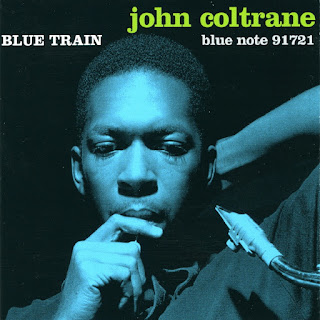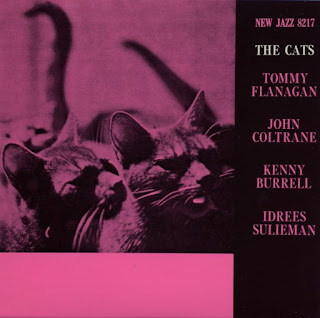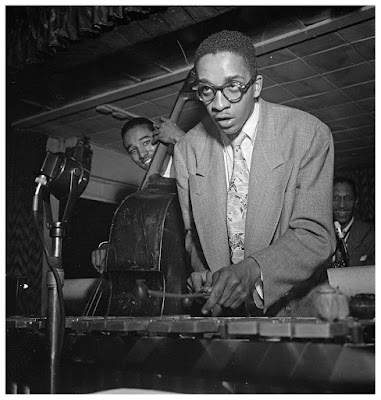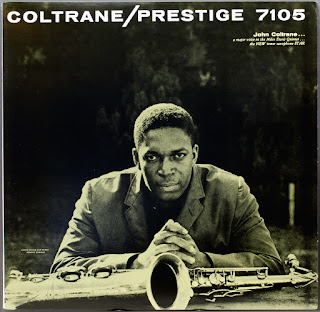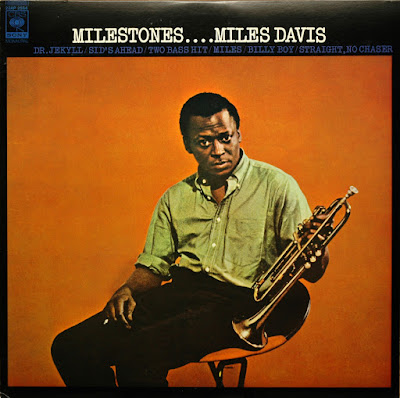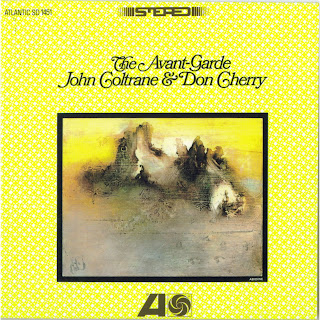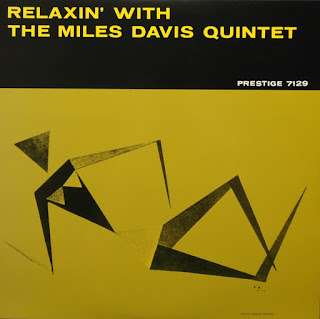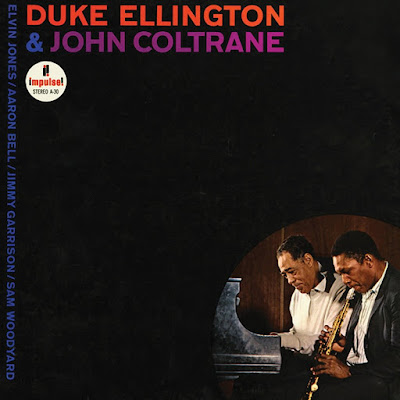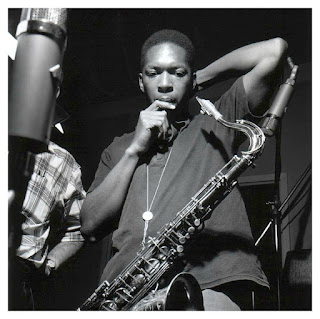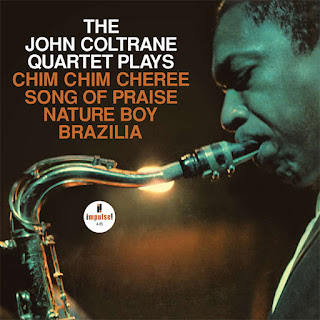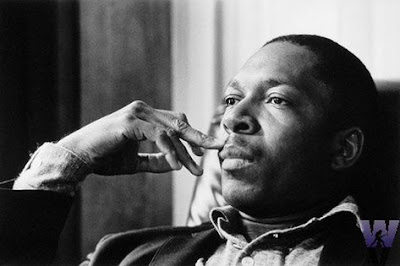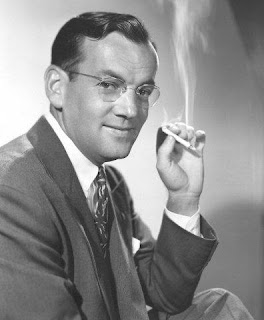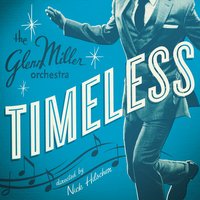"Take the Coltrane"
Host Joe Bev presents some of his favorite LP recordings by jazz
legend John Coltrane, both classic and obscure. Tracks will
include:
01 - Blue Train - Blue Train
Blue Train is the second studio album by John Coltrane, released in 1958 on Blue Note Records, catalogue BLP 1577. Recorded at the Van Gelder Studio in Hackensack, New Jersey, it is Coltrane's second solo album, the only one he recorded for Blue Note as a leader, and the only one he conceived personally for the label. It has been certified a gold record by the RIAA.Released 1958
Recorded September 15, 1957
Van Gelder Studio, Hackensack
Genre Hard bop
Length 42:50
Label Blue Note
BLP 1577
Producer Alfred Lion
02 - Naima - Giant Steps
"Naima" is a ballad composed by John Coltrane in 1959, and named after his then-wife, Juanita Naima Grubbs. It first appeared on the album Giant Steps, and is notable for its use of a variety of rich chords over a bass pedal. It is mainly made up of a slow, restrained melody, though there is also a brief piano solo.
Released January 27, 1960
Recorded May 4–5, 1959
December 2, 1959
Genre Jazz
Length 37:03
Label Atlantic
Producer Nesuhi Ertegün
03 - Eclypso - The Cats
The Cats is an album credited to jazz musicians Tommy Flanagan, John Coltrane, Kenny Burrell, and Idrees Sulieman, released in 1959 on New Jazz, a subsidiary label of Prestige Records.
Released End of August 1959[1]
Recorded April 18, 1957
Van Gelder Studio, Hackensack, NJ
Genre Jazz, hard bop
Label New Jazz/Prestige NJ-8217
Producer Bob Weinstock
Personnel
Idrees Sulieman — trumpet
John Coltrane — tenor saxophone
Tommy Flanagan — piano
Kenny Burrell — guitar
Doug Watkins — bass
Louis Hayes — drums
Giant Steps is the fifth studio album by jazz musician John Coltrane as leader, released in 1960 on Atlantic Records, catalogue SD 1311. His first album for his new label Atlantic, it is the breakthrough album for Coltrane as a leader, and many of its tracks have become practice templates for jazz saxophonists. In 2004, it was one of fifty recordings chosen that year by the Library of Congress to be added to the National Recording Registry.
05 - Centerpiece - Bags & Trane (CD bonus track)
Bags & Trane is an album credited to jazz musicians Milt Jackson and John Coltrane, released in 1961 on Atlantic Records, catalogue SD 1368. Taking its title from Jackson and Coltrane's nicknames, it is the only collaborative record by the pair, although only Jackson contributed original compositions. In actuality, the album belongs in Jackson's discography, as he was the session leader and still signed to Atlantic under the auspices of the Modern Jazz Quartet, and not in that of Coltrane, who had left the label for Impulse Records at the time of this album's issue. However, like Prestige Records before them, as Coltrane's fame grew after he had stopped recording for the label, Atlantic used varied unissued recordings and released them with Coltrane's name more prominently displayed.
Personnel
Milt Jackson — vibraphone
John Coltrane — tenor saxophone
Hank Jones — piano
Paul Chambers — bass
Connie Kay — drums
06 - Straight Street - Coltrane
Coltrane is the debut album by jazz musician John Coltrane, released in 1957 on Prestige Records, catalogue 7105. The recordings took place at the studio of Rudy Van Gelder in Hackensack, New Jersey, and document Coltrane's first session as a leader. It has been reissued at times under the title of First Trane.
Personnel
John Coltrane – tenor saxophone
Johnnie Splawn – trumpet on "Bakai", "Straight Street", "While My Lady Sleeps", "Chronic Blues"
Sahib Shihab – baritone saxophone on "Bakai", "Straight Street", "Chronic Blues"
Red Garland – piano on side one
Mal Waldron – piano on side two
Paul Chambers – bass
Albert "Tootie" Heath – drums
07 - Straight, No Chaser - Milestones
Milestones (CL 1193) is a studio album by American jazz trumpeter and composer Miles Davis. It was released in 1958 by Columbia Records. "Straight, No Chaser" is a jazz standard composed by Thelonious Monk. It was first recorded on Monk's Blue Note Sessions in 1951. It has been recorded numerous times by Monk and others and is one of Monk's most covered songs.[1] It is a 12-bar blues in B♭ which, like one of his other B♭ blues, "Blue Monk", makes creative use of chromatics in the melody. Miles Davis recorded a famous version on his Milestones album, in which the tune is played in F rather than B♭.
Personnel
Miles Davis – trumpet
Julian "Cannonball" Adderley – alto saxophone
John Coltrane – tenor saxophone
Red Garland – piano
Paul Chambers – double bass
Philly Joe Jones – drums
08 - The Late Late Blues - Bags & Trane
Released Mid July 1961
Recorded January 15, 1959
Atlantic Studios, New York City
Genre Jazz, hard bop
Length 36:51 original LP
56:33 CD reissue
Label Atlantic Records
SD 1368
Producer Nesuhi Ertegün
09 - Bemsha Swing - The Avant-Garde
The Avant-Garde is an album credited to jazz musicians John Coltrane and Don Cherry, released in 1966 on Atlantic Records, catalogue SD 1451. It features Coltrane playing the compositions of Ornette Coleman accompanied by the members of Coleman's quartet: Cherry, Charlie Haden and Ed Blackwell. It is assembled from unissued results of two separate recording sessions at the Atlantic Studios in New York City in 1960.
Released 1966
Recorded June 28, 1960
July 8, 1960
Genre Jazz, free jazz, avant-garde jazz
Label Atlantic
Producer Nesuhi Ertegün
Personnel
John Coltrane — tenor and soprano saxophone
Don Cherry — cornet
Percy Heath — bass
Ed Blackwell — drums
10 - Woody'n You - Relaxin' with the Miles Davis Quintet
Relaxin' with the Miles Davis Quintet is an album recorded in 1956 by Miles Davis. Two sessions on 11 May 1956 and 26 October in the same year resulted in four albums—this one, Steamin' with the Miles Davis Quintet, Workin' with the Miles Davis Quintet and Cookin' with the Miles Davis Quintet. These four albums are considered to be among the best performances in the whole hard bop subgenre.[3] The album was remastered by Rudy Van Gelder in 2005 for Prestige Records. This album includes dialogue snippets taken from the original master reel. It also emphasizes the Miles Davis' concentrated ballad-style playing with his medium-register trumpet.
Released End of March 1958
Recorded May 11 and October 26, 1956
Van Gelder Studio, Hackensack, New Jersey
Genre Jazz
Length 36:13
Label Prestige
PRLP 7129
Producer Bob Weinstock
Personnel
Miles Davis - trumpet
John Coltrane - tenor saxophone
Red Garland - piano
Paul Chambers - bass
Philly Joe Jones - drums
11 - Angelica - Duke Ellington & John Coltrane
Duke Ellington & John Coltrane is a jazz album by Duke Ellington and John Coltrane recorded on September 26, 1962, and released in February 1963 on Impulse! Records.
Coltrane said:
"I was really honoured to have the opportunity of working with Duke. It was a wonderful experience. He has set standards I haven't caught up with yet. I would have liked to have worked over all those numbers again, but then I guess the performances wouldn't have had the same spontaneity. And they mightn't have been any better!"
Released February 1963
Recorded September 26, 1962
Van Gelder Studio, Englewood Cliffs
Genre Jazz
Length 35:05
Label Impulse!
A-30
Producer Bob Thiele
Personnel
Duke Ellington - piano
John Coltrane - tenor saxophone
Jimmy Garrison - bass
Elvin Jones - drums
12- Minor Mishap - The Cats
"In 1957, the greatest year for recorded music including modern jazz, Detroit was a hot spot, a centerpiece to many hometown heroes as well as short-term residents like John Coltrane and Miles Davis. It was here that Trane connected with pianist Tommy Flanagan, subsequently headed for the East Coast, and recorded this seminal hard bop album. In tow were fellow Detroiters -- drummer Louis Hayes, bassist Doug Watkins, and guitarist Kenny Burrell, with the fine trumpeter from modern big bands Idrees Sulieman as the sixth wheel. From the opening number, the classic "Minor Mishap," you realize something special is happening. Flanagan is energized, playing bright and joyous melody lines, comping and soloing like the blossoming artist he was. Coltrane is effervescent and inspired, hot off the presses from the Miles Davis Quintet and searching for more expressionism." - AllMusic Review by Michael G. Nastos
13 - Chim Chim Cheree - The John Coltrane Quartet Plays
The John Coltrane Quartet Plays is a 1965 album by jazz musician John Coltrane.
Released August 1965[1]
Recorded February 17-18 and May 17, 1965
Van Gelder Studio, Englewood Cliffs
March 28, 1965
Village Gate, New York City
Genre Avant-garde jazz
Post-bop
Length 37:52 original LP
59:23 CD reissue
Label Impulse!
A-85
Producer Bob Thiele
Personnel[edit]
John Coltrane – tenor saxophone and soprano saxophone
McCoy Tyner – piano
Jimmy Garrison – double bass
Elvin Jones – drums
14 - Two Bass Hit - Milestones
Milestones is one of Davis' first forays into the developing modal jazz experiments – with his composition "Milestones", listed on the original LP issue as "Miles". (This modal piece is not to be confused with the earlier composition with the same title recorded by Davis and Charlie Parker in 1947.) These modal techniques were continued and expanded on the groundbreaking album Kind of Blue. It was also the last time the rhythm section of Philly Joe Jones, Red Garland and Paul Chambers played with Davis on record. enor saxophonist John Coltrane's return to Davis' group in 1958 coincided with the "modal phase" albums: Milestones and Kind of Blue (1959) are both considered essential examples of 1950s modern jazz. Davis at this point was experimenting with modes – scale patterns other than major and minor
Bio: John William Coltrane, also known as "Trane" (September 23, 1926 – July 17, 1967),[1] was an American jazz saxophonist and composer. Working in the bebop and hard bop idioms early in his career, Coltrane helped pioneer the use of modes in jazz and was later at the forefront of free jazz. He led at least fifty recording sessions during his career, and appeared as a sideman on many albums by other musicians, including trumpeter Miles Davis and pianist Thelonious Monk.
As his career progressed, Coltrane and his music took on an increasingly spiritual dimension. Coltrane influenced innumerable musicians, and remains one of the most significant saxophonists in music history. He received many posthumous awards and recognition, including canonization by the African Orthodox Church as Saint John William Coltrane and a special Pulitzer Prize in 2007. His second wife was pianist Alice Coltrane and their son Ravi Coltrane is also a saxophonist.
https://en.wikipedia.org/wiki/John_Coltrane
http://www.johncoltrane.com/biography.html
| OUR AUDIO BOOKS: http://waterlogg.com/ buy.html | OUR PODCASTS: http://waterlogg.com/ waterlogg-radio-network.htm | Joe's IMDB: http://www.imdb.com/ name/nm5327470/ |



